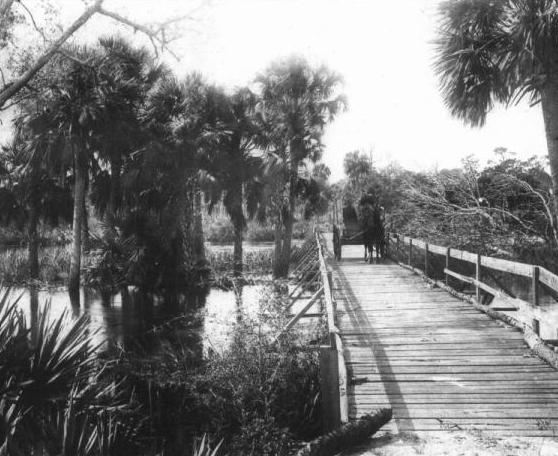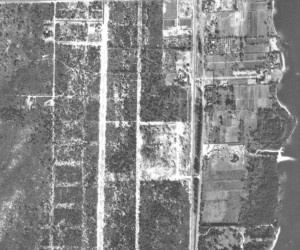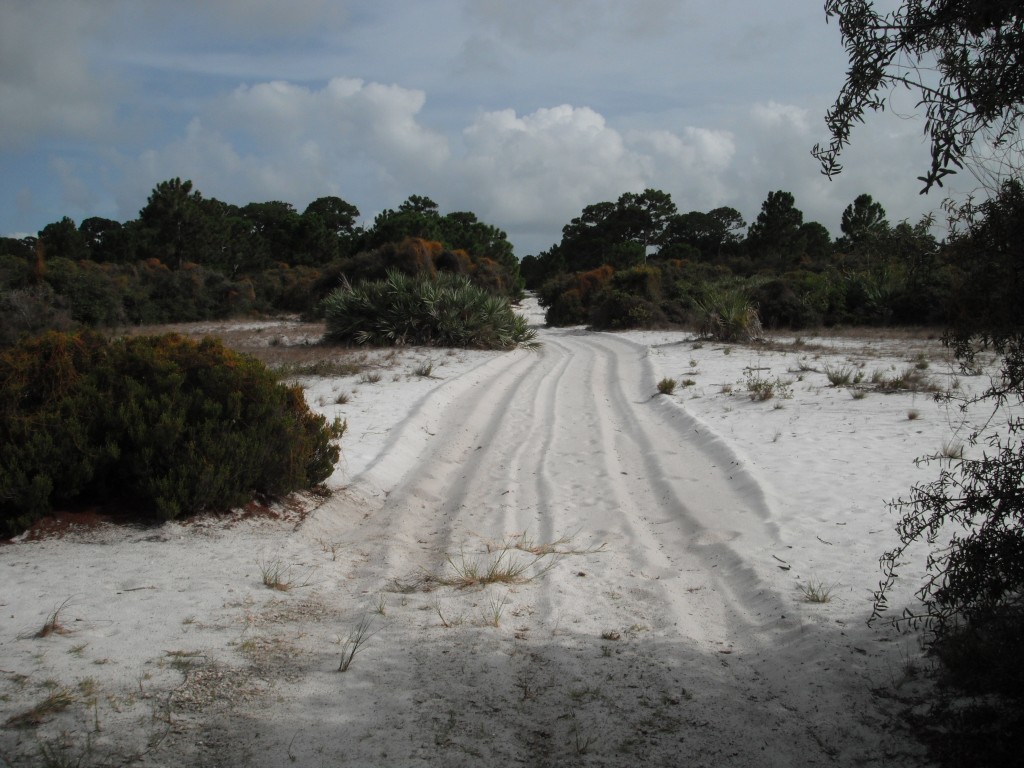In an earlier post, I reviewed the history of Military Trail, which is a mid-county road (one time trail) to Fort Lauderdale. But as most of the population in the 1890s was along the coastal areas, getting to Miami was no easy manner. It was common, although not inexpensive, to take a steamer or sailboat from Jupiter or Palm Beach to Miami along the ocean. For those who couldn’t afford it, like the US Postal Service, you could walk along the beach and get there, as the famous “Barefoot Mailman” did. Just watch those inlet and river crossings with their hungry crocodiles and alligators.
Its hard to imagine but in the 1890s the area that today comprises Martin, Palm Beach, Broward and Dade counties was one huge county called Dade County. Miami was then known as “Fort Dallas” and had held the county seat. That changed in 1889 when the county seat and courthouse was moved to Juno, which had more population and the only railroad line in Dade county (the Celestial Railroad from Jupiter to Juno). The total population in Dade county was about 1,000. As commissioners and other officials from Miami had to trek up to Juno on the water, they realized that some sort of stage coach line would be more reliable. This was also prompted too for a better mail route after a barefoot mailman (Ed Hamilton) was eaten by alligators during a river crossing.
So it was decided that a road would be built from Hypoluxo south to what was called “Lemon
City” (today’s north Miami). The trip from Juno to Hypoluxo was quite manageable by way of Lake Worth via boat,  so a road was not needed for that part of the route. Charles W. Pierce, in his book “Pioneer Life in Southeast Florida” provides a very detailed description of the road and why it was built. He writes in his book that a more reliable way was needed for people and mail to reach Miami. Pierce was appointed to the “road commission”, which met a total of two times. They put a request out for bids to survey and plat out the new road to Miami, designed of course not for cars, since they had not yet been invented, but for a mule wagon, or as he refers to it, a hack. The road was all of eight feet wide, and built along the natural sand ridge adjacent to the barrier islands on the peninsula.
This was no speedy form of travel. Pierce stated that because of the soft white sand, the speed was little more than a slow pace of about 2-3 miles per hour. At that rate, it was a two-day tripto Miami, but still better than walking the beaches. Bridges were built over smaller waterways such as the Hillsboro
River. It took 14 hours to travel from Hypoluxo to the New River in Fort Lauderdale. Once you reached there, you camped with Frank Stranahan in some tents. According to Pierce, “He was the general manager, cook, dishwasher, chambermaid, and entertainer for the guests.” The next day you would cross the river by boat, then enjoy another seven hour ride to Miami. In all references I can find to the road, it is always just referred to as the “Sand Road.” The Sand Road brought the time of the Barefoot Mailman to an end.
There is not an accurate map of the exact route that the Sand Road took, but it is believed that large parts of it became the Dixie Highway and U.S. 1. You can actually walk the only remaining portion of the Sand Road that is still sand. The northernmost portion of the Sand Road is located within the Hypoluxo Scrub Natural Area on Hypoluxo Road and U.S. 1. This land was never built on and only has had some light agricultural use over the years.
In this aerial photo from 1953, the sand road is clearly visble down the middle of the tract.
Today, the returning vegetation is reclaiming the road, but service vehicles in the park still use the road.
Take a walk through the Hypoluxo Scrub area and experience for yourself the road of a bygone era, the road that helped people “get there from here.” The Park is open sunup to sundown seven days a week and admission is free.







